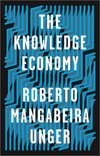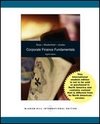
Basic income
Source: Wikipedia. Pages: 35. Chapters: Alaska Permanent Fund, André Gorz, Basic Income Earth Network, Basic income guarantee, Basic income in Brazil, Basic income in the Netherlands, Citizen's dividend, Eduardo Suplicy, Guaranteed minimum income, Harry... Viac o knihe
Produkt je dočasne nedostupný
15.31 €
bežná cena: 17.40 €
O knihe
Source: Wikipedia. Pages: 35. Chapters: Alaska Permanent Fund, André Gorz, Basic Income Earth Network, Basic income guarantee, Basic income in Brazil, Basic income in the Netherlands, Citizen's dividend, Eduardo Suplicy, Guaranteed minimum income, Harry Dahms, Iranian targeted subsidy plan, List of basic income models, Mincome, Negative income tax, Omitara, Philippe Van Parijs, Pirate Party Germany, Real freedom, Social dividend, Steven Pressman (economist), The Basic Income (movie), Vivant, Working poor. Excerpt: The Iranian targeted subsidy plan (Persian: ¿) also known as the subsidy reform plan was passed by the Iranian Parliament on January 5, 2010. The government has described the subsidy plan as the "biggest surgery" to the nation's economy in half a century and "one of the most important undertakings in Iran's recent economic history". The goal of the subsidy reform plan is to replace subsidies on food and energy (80% of total) with targeted social assistance, in accordance with Five Year Economic Development Plan and move towards free market prices in a 5-year period. The subsidy reform plan is the most important part of a broader Iranian economic reform plan. According to the government, approximately $100 billion per year is spent on subsidizing energy prices ($45 billion for the prices of fuel alone) and many consumable goods including bread, sugar, rice, cooking oil and medicine. However, some experts believe direct subsidies are about $30 billion, depending on oil prices. The subsidy system has been inherited from the Iran-Iraq war era but was never abolished. Iran is one of the largest gasoline consumers in the world, ranking second behind the United States in consumption per car. The government subsidy reform has been years in the making for various reasons. Iran's Supreme Leader has backed the government's latest subsidy reform plan. According to the Iranian government, $100 billion is spent on subsidies each year. The reform plan aims to encourage public transport by decreasing fuel subsidies.Iran was the largest provider of fuel subsidies in the world by 2009. Many Iranian experts agree that these unsustainable subsidies encourage waste among goods, including in the production sector, ranging from gasoline to bread that must be stopped and the only way to do that is to redirect subsidies. The stated goal of the subsidy reform is "to rejuvenate Iran's economy, increase productivity, give it a new footing and bring it out of the slump it has been in for so lon
- Vydavateľstvo: Books LLC, Reference Series
- Formát: Paperback
- Jazyk:
- ISBN: 9781155518015



 Anglický jazyk
Anglický jazyk 







